With all the makings of a crime mystery, this was easily the horological story of the year: a watch that has been the subject of scientific endeavour, created by the genius A. L. Breguet, owned by royalty, lost, found, stolen and in the end, the subject of a potential fraudulent liquidation of a museum’s assets at a prestigious London auction house.
Certain objets d’art seem to cause patterns in human behaviour that resonate over time, objects that fascinate and capture the imagination of generations. Breguet’s watches and clocks from the David Salomons collection (now housed at the L.A. Mayer Museum, Jerusalem) most definitely meet the criteria. They are undoubted works of horological art, still influential and still lauded.
The initial impulse
Our story started a few months ago when I received news that there were three notable Breguet pocket watches at Sotheby’s London and that they would be around for a short while for viewing. Due to COVID restrictions, these were very limited. I asked to see the catalogue – as watches of this magnitude would normally be the star lots of any horological themed auction- and I was handed a booklet entitled “Select Works from the L.A. Mayer Museum for Islamic Art Jerusalem” with the Breguet’s listed in some detail as lots 205 through 207 towards the back.
The Breguet n. 2788 is at the centre of a controversy that involves much more than horology.
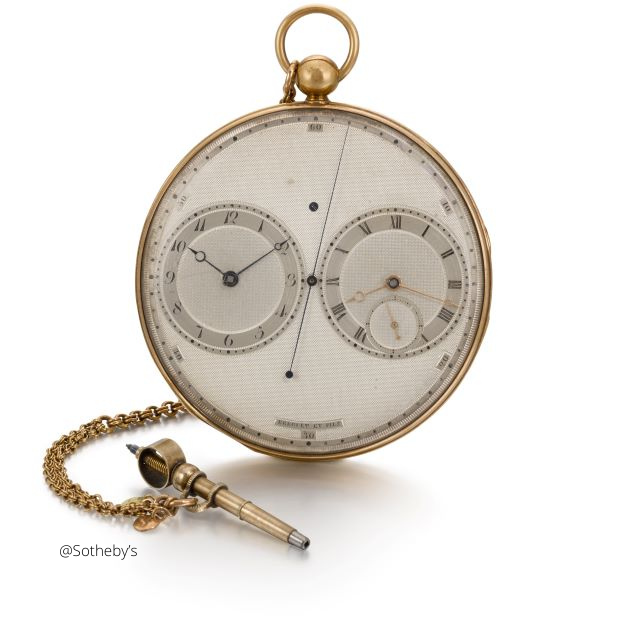
I posted on Instagram about the watch with a question mark over the valuation, which appeared to my eyes far below where it should have been. Watches in this rarefied field are usually listed as the price on application (POA) or with at least six zeros after the initial number. The post elicited some comments from collectors I knew, who also questioned the valuation and sale. One had even filed a lawsuit in Israel. With the Israeli press becoming involved, a notice of the sale reached President Rivlin who took to the modern soap-box that is Twitter to question why such goods were being auctioned off in London. With the sale less than a few days away it was a race against time to halt it.
On 28th October, the auctioneer stood on the lectern and announced that the lots for sale had been postponed and that it would now take place in November. Despite assurances to the audience and to journalists, at the time of going to press, the sale has still not taken place. Further lawsuits have been filed in Israel to prevent it ever taking place. At the centre of it all is a Zurich based lawyer Dr Herbert Winter, the head of the trust and foundation in charge of the L.A. Mayer Museum’s funding, who has remained resolutely mute on the subject.
Breguet’s influence
The watch that had caught my attention from the three Breguets at auction was the no. 2788 resonance pocket watch. Despite the importance of all of them, this one was arguably the most significant both in terms of history and horology. It was once the property of the British Royal household, an experimental scientific instrument and effectively, a prototype for the form watches made by George Daniels and Francois Paul Journe in the 20th and 21st centuries.
The F.P. Journe Chronomètre à Resonance is the direct descendant of Breguet’s no. 2788.

There are three resonance watches made by Breguet that are known to have survived the approximate two centuries since their manufacture: no. 2667, 2788 and 2794. The latter two are part of the collection at the L.A. Mayer Museum. George Daniels, in his book, The Art of Breguet, described the watches as “examples of an experiment to demonstrate Breguet’s theory of dynamics as applied to oscillating bodies.” Although it was a known phenomenon in pendulum clocks, Breguet realised that the same forces would be at work between balance wheels where the motion was transmitted through the movement plate.
Within the watches, the escapements, in close proximity, could be adjusted in terms of the distance between them so tests could be run on how they influenced each other. Because Breguet thought that disturbances in the air would also prove to be a problem between the oscillating balance wheels, he constructed the weights inside and on the 2788 watch only, a thin smooth steel guard to minimise the effects further. In other words, pocket watch no. 2788 is the most advanced in terms of thinking about the problem.
Back and forth
The importance of no. 2788 to Breguet was reflected in the price. It was sold on 2nd October 1818 to King George IV of Great Britain (then Prince Regent) for 7200 francs. The other two were sold for less. Watch no. 2667 was sold on August 1814 to a Mr Garcias in London for 5,000 francs. Finally, no. 2794 was sold on 3 September 1821 to Louis XVIII King of France for the sum of 7,000 francs.
One of Breguet’s many applications for a patent on a horological invention.

The last time one of the Breguet resonance watches came up for sale was back in 2012 at Christie’s (no. 2667) and it sold for 4.3million CHF. Although there is a practice within auction houses of offering lots at low estimates to engage interested bidders, the suggested range for no. 2788 was only 10 percent of the sale price for an arguably lesser watch eight years earlier. The “numbers” were not adding up. Why would the L.A. Mayer museum part ways with its most valuable piece and why at such low range for bids?
No. 2788 was interesting for reasons beyond horology. After being part of the Royal household, it went missing for several years, then showed up under the ownership of Sir Berkeley Sheffield, Bt. and then of Louis Desoutter before he sold it to Sir David Salomons in May 1920. The watch was passed onto his daughter: Vera Bryce Salomons who in turn donated the collection to the L.A. Mayer Museum in Jerusalem.
The watch collection was held on display there until April 1983 when a lone thief – Na’aman Diller -broke into the room and stole most of the important watches in the cabinets. The most famous of which was the Breguet no. 160 “Marie Antoinette”. When I asked as to whether the no. 2788 was part of Diller’s inventory, the auction house and the museum declined to comment. However, it is known that Diller was meticulous in his planning and knew which the most valuable watches were to take. It is highly likely that no. 2788 was taken along with the 160 and just over one hundred others.
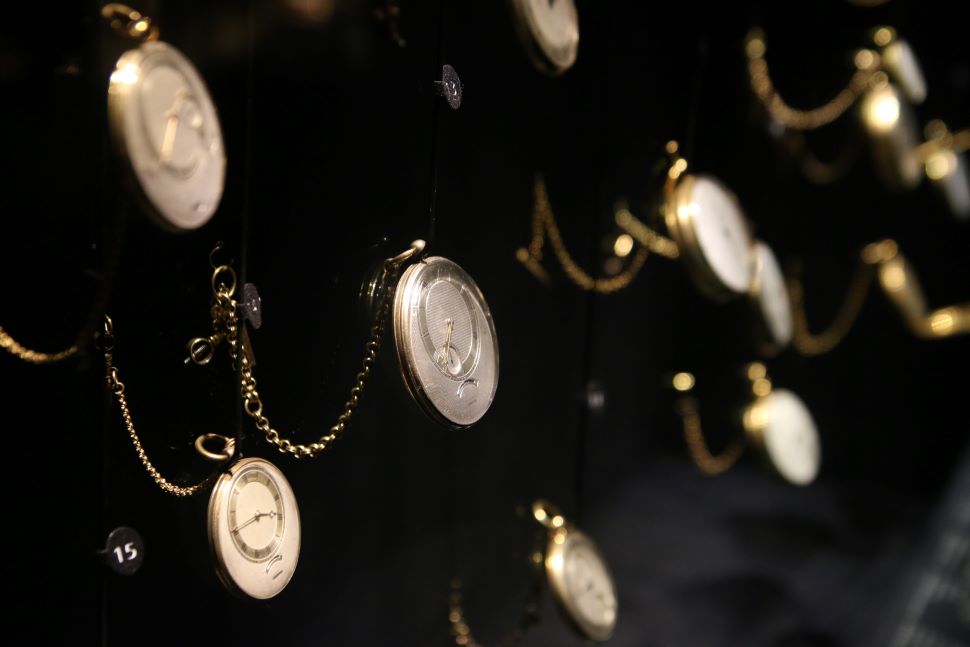
Whether the watch was returned by Diller or whether it never left the building, no. 2788 remained at the museum once Diller’s illegally obtained items were returned and until it was selected to be part of the auction in London.
Synchronised momentum
Shortly after the post on Instagram (22nd October 2020), I received a call to notify me that a lawsuit had been filed in a court in Jerusalem against the sale of the items from the L.A. Mayer Museum of Islamic Art with the Ministry of Justice, Corporate Authority and Registrar of Associations (case number: C1 / 1.15 / 122).
The filed lawsuit listed a series of 18 complaints that questioned the ownership of the items, the rationale given for selling them and the timing of the sale in general. In short, the lawsuit pointed out that if the items were the L.A. Mayer Museum’s to sell and if they reached their upper estimate total in the catalogue, the museum could only run for another year on the money. More to the point, the bulk of the funding (around 80 percent) came from a very well-endowed trust fund: the Herman de Stern Foundation.
The Israeli press was alerted. I was interviewed by The Times of Israel on the matter. The sale itself was halted three days before the auction was to take place once President Rivlin tweeted that Israel’s museums were “The repositories of enormous spiritual and material assets for the State of Israel and the Middle East, and we must do all we can to keep them in Israel.” The Hermann de Stern Foundation then suspended the auction “Due to our great respect for the president of Israel” promising to come to an agreement with the Ministry of Culture; but the questions over why the sale and the selection of items remained.
The movement of the Breguet no. 2788, a compendium of his final thoughts on resonance.
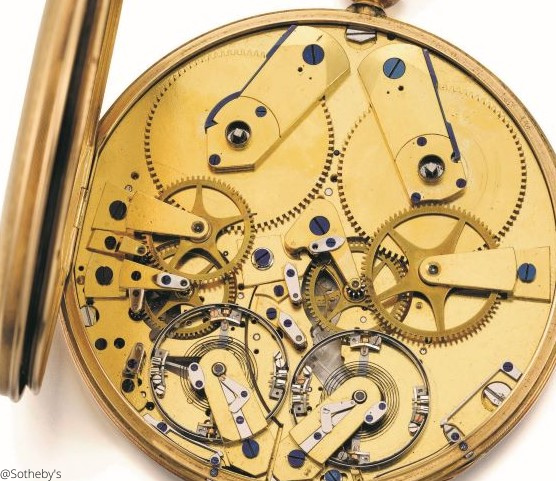
Resonance
In the time since the suspension of the auction, there have been several other developments. The intended liquidation of assets has become headline news in Israel and other lawsuits have now been filed. Other evidence has come to light to question why the auction was necessary or which entity had the legal authority to sell.
A confidential investigation by an asset tracing company into the financial well-being of the Stern foundation in November 2020 concluded that “Therefore, while it remains entirely possible for the Museum to have suffered financial pressures in recent times and particularly in light of the ongoing COVID-19 pandemic, we do not note the presence of significant financial red flags as cited to drive the disputed auction”. The need to reportedly sell significant items from the museum’s collection is not born out by the financial accounts.
There is also the question of ownership and whether the museum or the trust had the right to sell the items in the first place. Some of the board members of the foundation also sit on the board of the museum. According to Israeli lawyer Shachar Ben-Meir, quoted in Haaretz, there is a conflict of interest in the decision-making. All decisions should be made solely for the museum’s benefit and not benefit the foundation or vice versa.
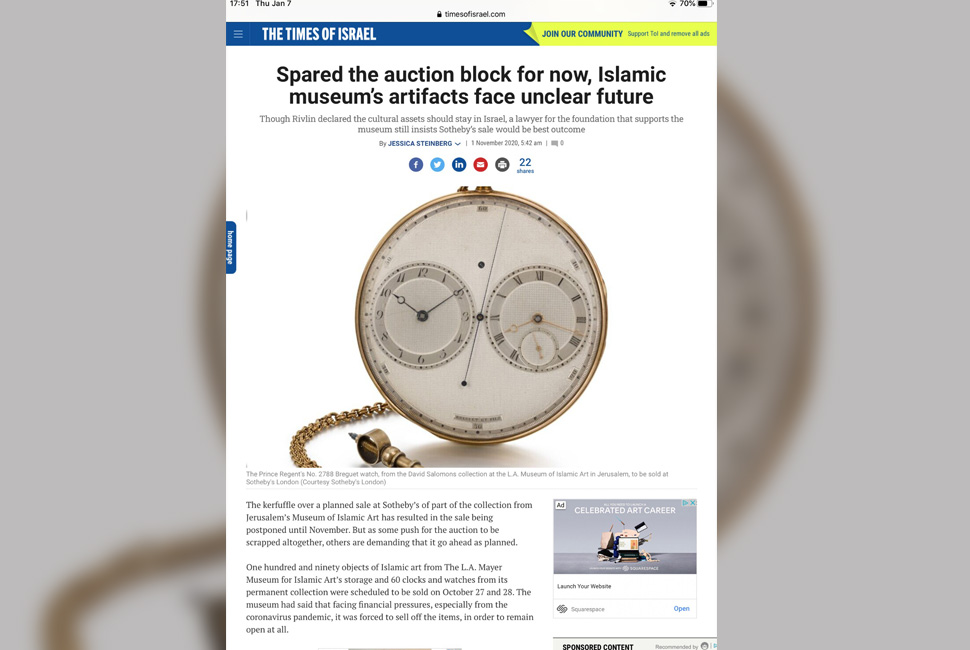
To complicate matters further, there is a legal question mark over whether ownership is in the hands of the Foundation or museum. In terms of the original will left by Vera Salomons, the watches and other items belong to the museum, which ran into financial difficulties in 1995 and as a result, the ownership of items may have been transferred to the Foundation. Nothing is quite black and white in this grey legal area. Doron Shorer, who was the court-appointed liquidator from the 1995 financial difficulties, recently said to Haaretz: “I don’t know if this is permissible or if it’s compatible with the founding documents. Salomons’ donated the museum and the items without the right of transfer and accordingly, to the best of my recollection, all of the collections belong to the museum. If a change was made, later on, I don’t know if it meets the requirements of the law and the original museum regulations.”
One final red-flag lies with permission to offer the Breguet no. 2788 for sale. The museum began determining which items it wished to sell and contacted the IAA (Israel Antiquities Authority) in June 2019 to obtain approval to remove 145 items that were created before 1700 (which would qualify them as antiquities). No approval was requested for 130 items of later origin which would include the watches. There is a strong possibility that the IAA did not act in accordance with the Israeli Antiquities Law; section 26 of which says that if a museum owner wishes to liquidate a collection, they should inform the IAA and enable the state to purchase the items.
Rachel Hasson, who worked for the museum for 44 years and was at the time its Artistic Director, was baffled by the fact that the museum had used her name to justify the sale. In her statement to the Israeli Supreme Court, she declared, “I first heard about the sale two weeks ago from a company. No one consulted with me. I thought they got out of it and found other budget sources. I chose only things that were in the warehouse, items that were in bad condition, whose value was low, that were restored. The pieces they are offering now are very different; only a minority of them, those of low value, were on the first list.” At the verge of tears, she added, “some of these new objects are masterpieces.”
Finally, the Hasheva Foundation (an Israeli organisation for the restitution of stolen art) has issued an injunction to stop the sale in the Israeli Supreme court, case HCJ 7847/20. The case has been delayed and was due to be heard in very early January.
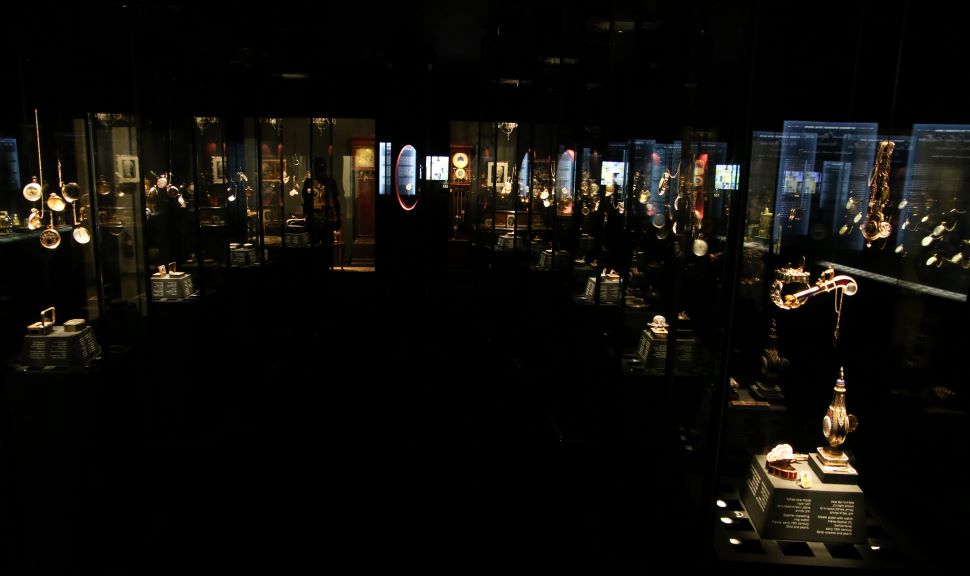
Overall, the various parties to the sale appear to be iterating to an agreement. The reasons or rationale that prompted the attempted sale now seem to be no longer mentioned. The sale will probably not take place and the items retained by the museum. The only question remains the auction house’s approximate £1.4 million commission from the sale. Under the normal course of business, there is a clause in the terms of the auction that if a government intervenes the sale does not need to go ahead and no commission is payable or forfeited by the seller. In agreeing to the postponement of the sale at the last minute, the museum accepted this clause could be removed so that the commission will be paid to the auction house whether the sale happens or not. There are also allegations that Sotheby’s submitted an incomplete and inaccurate manifest to the IAA and were complicit in selecting the most valuable items for the sale [1].
The ramifications of the planned sale are still reverberating through the Israeli law courts and while the mystery is not yet solved, the essential nagging questions remain. Why is the watch being sold if the museum is not in the financial difficulty it claims to be? Why was the watch the end part of a sale largely comprised of Islamic art? And finally, why was the estimate on the watch over ten times below what it should have been?
Equilibrium
Once the agreement is reached, the Breguet no. 2788 will presumably once again regain its place in the collection at the L. A. Mayer Museum in Jerusalem alongside the more illustrious and talked about 160 “Marie Antoinette”. Of Breguet’s resonance watches, George Daniels declared them as a demonstration of the man’s art, his ability to think and reason. While no. 2788 might not be as lauded or as well-known as the 160, it is nonetheless an important example of his horological genius and searches for new methods of mechanical timekeeping. Such a rare and complete watch should remain in a museum for all to enjoy and marvel at rather than in a safe in a private collection.
Words: Dr Andrew Hildreth














Show Comments +